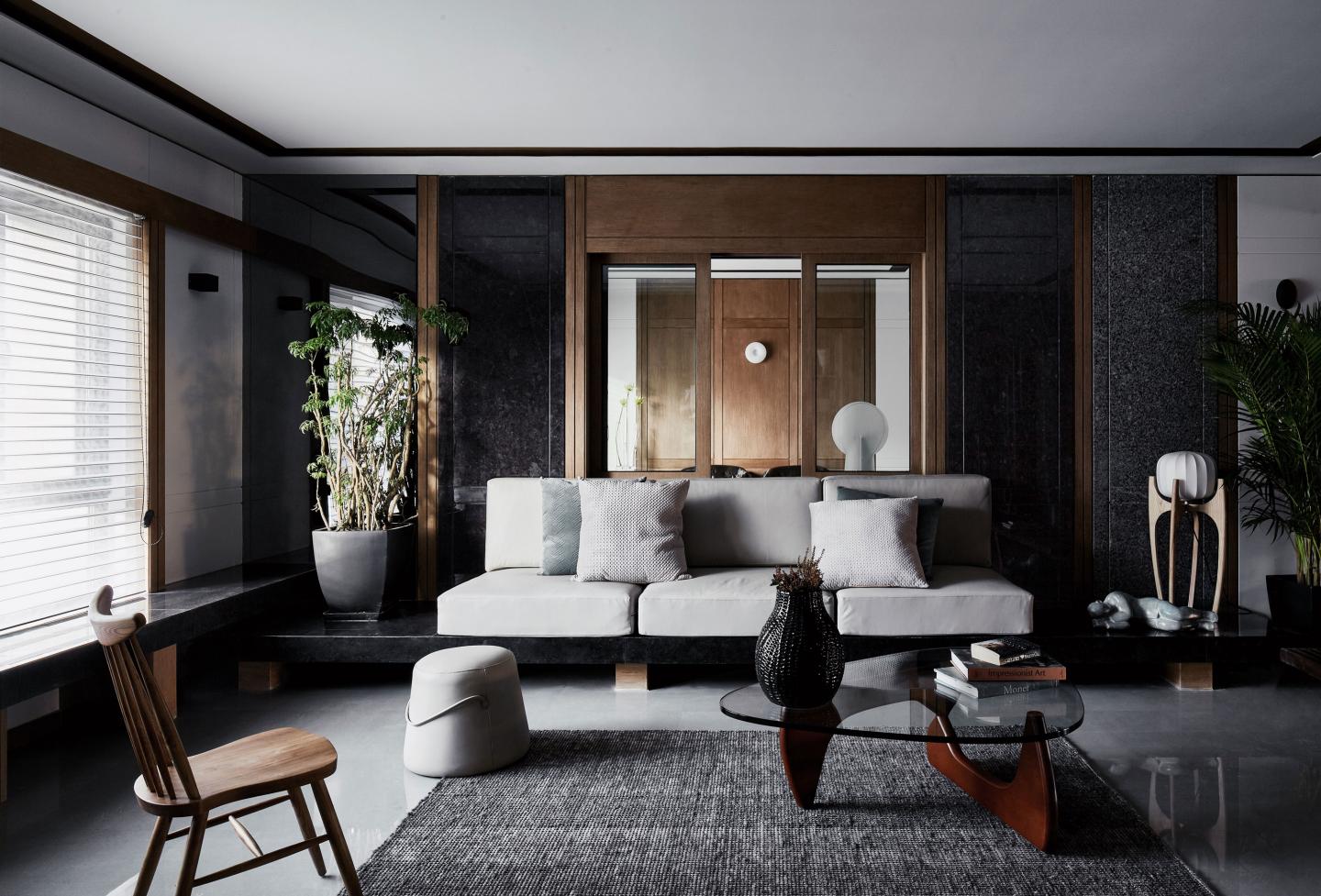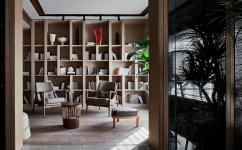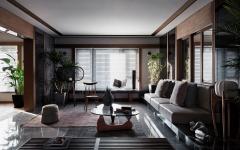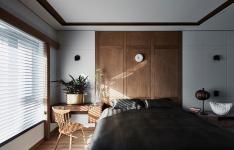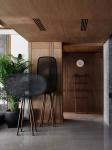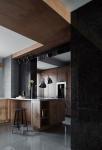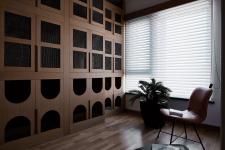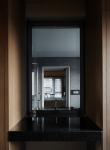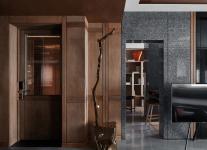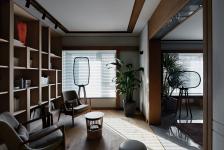The designer believes that identity of the architect can be studied and designed from the perspective of space, concept,
types and angles of the impressions, he finds it interesting and challenging so to accept this interior work.
For popular stereotypes of interior design for residential, it is difficult to bring in any kind of freshness by common
methods. This Beijing couple claim to create a different way of living as the sense of space similar to traditional Beijing
“hutong” (two live with their pets).
Based on this concept of “inside lanes”, the designer tried many possibilities in the process, he used various decorations
to realize and express the idea and performed a lot what so called “carrying” and “unloading” methods during the
construction process. The relationship between privacy and openness of the space is the focus of designing. He made
contradiction sensitively and seriously, when the owners would ask for privacy and isolation, they can use grilles, curtains,
etc., but if they might need more space, can abnegate them.
In fact, in order to expand the effect of the room by double or maybe triple-size, the designer removed some indoor
partition walls to merge with different small spaces since the original shape of the space is a typical square-shaped
residential area. It would remain boring if not subtracting walls to make structural a change, so the designer treated
differently for types of rooms bodied with different functions, with which each space provided at least two or more
"connections" to other blocks, like holes, windows or doors, so that the overall space was formed, as well as the wall
shaded, and space flowing to successfully create a way of living like "a block within a block", "a lane within a lane".
With more choices for pluralistic rooms and free space of connectivity, the owner could have more opportunities to
experience great conveniences brought by freely associations. People in the room can communicate directly with each
other at any spot at any time. The central area is a functional corridor, but the rear corridor contains the most private
space, which can be adjusted and blocked with windows, curtains or partition doors. For example, when the owner closes
all wooden and mirror doors in the corridor, the place will have a strong boundary and a considerable distance from the
outside world, leaving the owner with a very core and ceremonial clean area. At the same time, it takes variability of
openness into consideration.
In this project, the designer insisted on the origins of materials of stones, woods, metals and glasses, and he managed
very few treatments to process on them, by which way to compatible with interior and exterior to create amount of gray
space and get a feeling of such harmonious atmospheres. To index Alvar Aalto in a metaphor of an article "natural
reproduction", “the space created by architects should be harmonious, it is a world in which the threads of vision and time
are woven together with clues. The most basic latitude and longitude used for weaving is the line of emotions from people
who aimed to achieve communications and interactions.”
One of the biggest challenges is “in which way people desire to live in here” and “the attitude towards the living space”.
The designer regarded the design as a trajectory of inquiry and its followed-up ideas to try solving the issue, his efforts of
experiences, visions, adjustments and optimizations to define this kind of space never stopped. Throughout the work, he
reduced interference of elements and techniques like colors and shapes so as to only focus on the ritual way of life.
The owners can dine or work in the kitchen, bedroom, living room, or a table at any time to enjoy themselves, and these
feelings will greatly enhance the owners’ perceptions, understandings and visual perceived efficiency of a day in this
"expensive" city. The essence of living is what the designer constantly thinking about, he attempts to find ways to
establish meanings for residences and shelters by initial and original intentions in architectural and interior designing for
different clients.
2017
2017
Nolan Chao, Zhang Na, Kristen Lau, Lu Chunhua, Dai Shengguo, Zhao Guiying, Zhang Xu
